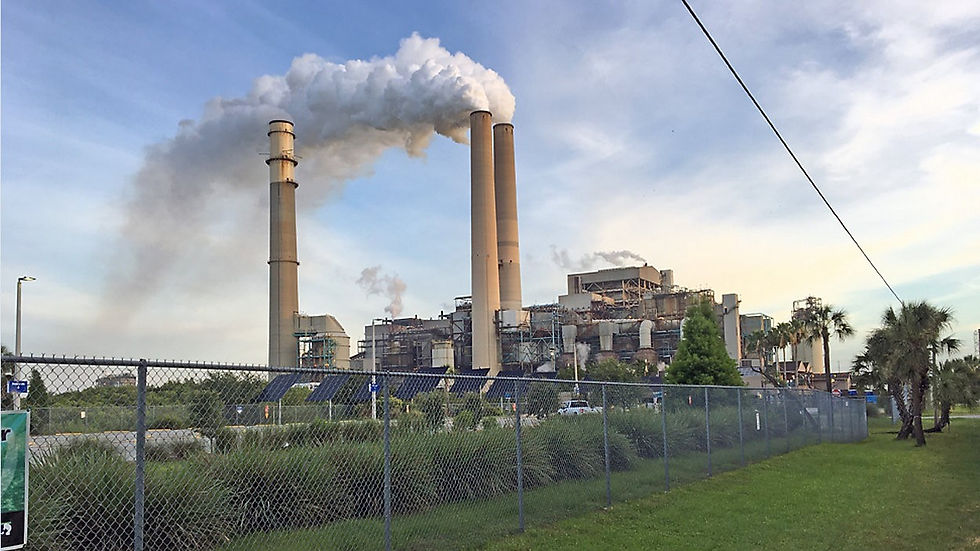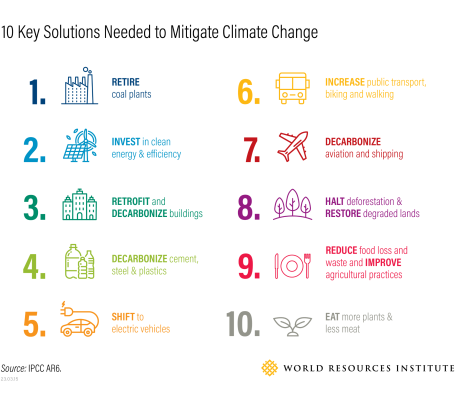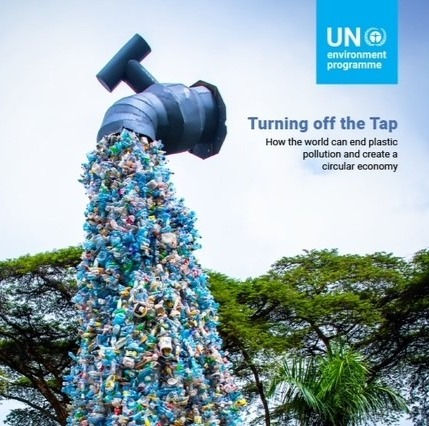How one "Day" spurred a deeper dive!
- Parjit
- Jun 18, 2023
- 10 min read
Updated: Sep 22, 2024
June 5 is celebrated as World Environment Day by millions of people across the world. Led by the United Nations Environment Program (UNEP) in 1973, June 5, 2023, marks its 50th anniversary. Yet, unabated greenhouse gas (GHG) emissions, biodiversity loss, and plastic pollution continue.
According to the PBS News Hour on June 5, 2023, scientists at the National Oceanic and Atmospheric Administration found the highest ever levels of GHGs in our atmosphere this spring, the highest in the last 4 million years. This is the result of burning fossil fuels, including oil, coal, and gas. Increased GHGs in our atmosphere retain extra heat reflected from the earth’s surface, resulting in global warming. The current increase of 1.1°C in the temperature of the earth’s surface, compared to the preindustrial levels, is already exhibiting itself in the form of droughts, intense heat waves, wildfires, hurricanes, flooding, and rising sea levels.
Continuing use of fossil fuels is therefore causing a dangerous interference with the earth’s natural climate. Parts of the world are already uninhabitable and unsuitable for agriculture, resulting in large scale human migrations. According to a recent New York Times report, some areas of the United States - including Florida, California, and Kentucky - are also becoming uninsurable as the intensity of the climate-related events is increasing. Scientists serving on the Intergovernmental Panel on Climate Change tell us that we have less than a decade now to rein in global warming and limit the irrevocable damage to our climate that we and nature might still be able to adapt to.

In the last few years, historic treaties or resolutions have been reached among nations of the world to combat these climate-related issues. Therefore, I decided to celebrate the World Environment Day (or week or the month) by trying to understand these treaties and resolutions for my own sake and to share this information with the audience of this blog if anyone else may also be interested in this topic. The most familiar or talked about of these treaties is the Paris agreement (COP 21, Dec 2015), but equally historic, though less well known, are the Montreal treaty for prevention of biodiversity loss reached in Dec 2022 (CBD COP15), and a UN resolution endorsed by 175 Member States in March 2022 to come up with a legally binding global agreement by the end of 2024 to end plastic pollution.
What are these various agreements/resolutions in a nutshell? And why are all three important and connected?
But first a few acronyms and some background…
Acronyms:
UNFCCC: United Nations Framework Convention on Climate Change, simply known as the Convention.
COP 21: 21st Conference of the Parties of the UNFCCC in Dec 2015
CBD: Convention on Biological Diversity
COP15: 15th Conference of the Parties of the UNFCCC in Dec 2022
CBD COP15: 15th Convention on Biological Diversity/15th Conference of the Parties
GBF: The Global Biodiversity Framework, a plan adopted by CBD COP15
Background:
It all started with the formation of the UNFCCC on March 21, 1994, when 197 countries ratified the Convention with the aim of preventing dangerous human interference with the earth’s climate system. This was the first recognition of the climate problem by all nations of the world.
The Kyoto protocol, adopted in 1997 at COP3, operationalized the Convention and put the onus for combating climate change on developed or industrialized nations. 37 nations in total had binding targets, which were based on the recognition that most of the greenhouse gases added to the earth’s atmosphere in the last 150 years came from activities of the industrialized nations. Kyoto came into force in 2005 with the first commitment period of 2008-2012 and the goal to reduce emissions to 5% below 1990 levels. Some nations succeeded in doing so, but the US and many other countries never ratified the Kyoto protocol.
Under Doha Amendment to Kyoto, the same 37 nations further committed to reduce emissions by 18% below 1990 levels in the second period (initially slated to be 2013-2020). However, Doha came into force in early 2021, as it needed to be ratified by 144 Parties to Kyoto to come into effect, which was only received in Oct 2020. Though the Kyoto protocol resulted in a limited success, and there has been an increase in GHG emissions since 1997, Kyoto was significant as a symbol and a first step to combat global warming.
Paris Climate Agreement:
In Dec 2015, at COP 21, 197 Parties of the UNFCCC reached a landmark agreement, now known as the Paris Agreement (1), to aggressively combat climate change by accelerating the actions and investments needed for a low carbon future. This is the first time that all nations committed to an ambitious effort to combat climate change and to adapt to its effects.
A special provision was made to provide financial assistance to developing countries to help them achieve their targets. It entered into force on Nov 4, 2016, when 55 countries accounting for at least 55% of global emissions, referred to as the ‘double threshold’, had signed the agreement. 187 states and the EU have since ratified the agreement. Unfortunately, the US withdrew from Paris in 2019. The new US administration rejoined the Paris accord in 2021.
What are the goals of the Paris Agreement?
1. A global response to keep the temperature rise well below 2°C above the preindustrial levels (1700s) by the end of this century, but preferably to below 1.5°C, by reducing GHG emissions.
2. Increase the ability of developing countries to deal with climate change mitigation and adaptation, achieved by mobilization and provision of finances, a new technology framework, and enhanced capacity-building.
3. All Parties will put forward their best efforts (Nationally determined contributions) and will strengthen these efforts in years ahead.
What needs to happen?
To achieve the goals of the Paris agreement, global emissions need to be reduced by 43% by 2030 from 2010 levels and to net-zero by 2050. Net-zero implies the amount of carbon released into the atmosphere will be the same as is absorbed by forests or oceans or by sequestration. To date, over 90 countries have made commitments to reach net-zero targets. These include the world’s largest emitters: China, the United States, and India. The Paris Agreement works on a 5-year cycle of increasingly ambitious climate action carried out by countries. It is worth mentioning that half of global GHG emissions come from the top seven emitters: China, The United States, India, the European Union, Indonesia, Russia, Brazil.

Are we on track to meet the goals of the Paris Agreement? No, unfortunately, 75% of the pledges or the short-term actions taken by individual countries are too low and will in fact result in increased emissions by 2030. The United Nations Emissions Gap Report 2022 (EGR, the 13th in an annual series) provides overview of the gap between where the GHG emissions are predicted to be and where they need to be in 2030 to avert the worst climate impacts (2). According to this report, there is currently no credible pathway to confine temperature change to 1.5°C or even 2°C.
If the present trajectory continues, we are on a path to a 2.8°C increase in temperature by the end of the century. According to the EGR, only an urgent system-wide transformation can put us back on track. For example, 98-100% of electricity should come from zero-carbon sources by 2050. Furthermore, improving the efficiency of food production, reducing food waste, changing dietary choices, reducing emissions from transportation, halting deforestation, and increasing tree cover are all necessary to reduce overall emissions (3). Fortunately, most of the technologies (such as solar and wind) needed to reach net-zero are already available and quickly becoming cost-competitive with fossil fuels. Carbon removal techniques need to be improved and are also necessary to reach the 1.5°C goal.
Why is 2030 a crucial target date?
To limit warming to 1.5°C, GHGs must peak before 2025 and decline 43% by 2030. Crossing this threshold will unleash far more severe climate impacts. Countries need to take very large steps to reach net-zero by 2050, which includes shutting down 2400 coal plants and replacing them with renewables by 2030. But 250 new coal plants are currently under construction around the world.
The Montreal Convention on Biological Diversity (CBD COP15):
The Convention on Biological Diversity is another type of COP that focuses on the conservation of biodiversity and nature. Climate change and biodiversity loss go together, and therefore the Montreal treaty or CBD COP15 is considered the Paris agreement for Biodiversity. Their missions are complementary to each other, and both are essential to halt or reverse effects of climate change. CBD COP15 was unanimously ratified by 196 countries in Dec 2022, excluding the United States, even though the US championed the idea of such a treaty and helped craft it the 1990s (4).
Why is it important to preserve biodiversity? Everything in nature is interconnected, and we cannot expect life to continue if links in this chain are broken or removed. Biodiversity is what gives resilience to the ecosystems, and ecosystems are what sustain all life on this planet, including humans. Biodiversity is “the very stuff of life”, according to the famous Pulitzer Prize winning biologist E.O. Wilson, and there can be no life without nature and biodiversity. In his book, ‘Half-Earth’, E.O. Wilson, while making a case for devoting fully half of the Earth’s surface for nature reserves, writes: “as the minds and stewards of the living earth, humans have a responsibility to do no further harm to the biosphere.” Christiana Figueres, the architect of the Paris Climate Agreement, states that “If we keep abusing nature, it will collapse, taking us with it.”

Currently, one in eight species of plants and animals is under threat of extinction. Similarly, tropical rainforests, coral reefs, and marine fish are all disappearing quickly (5). The five major drivers of biodiversity loss include: conversion of natural habitats into land for agriculture or industrial use (e.g., deforestation), exploitation of natural resources (e.g., overfishing or overhunting), climate change (global warming due to GHG emissions), pollution (particulate matter in the air and plastic pollution on land and in sea), and invasive species.
What are the goals of CBD COP15?
The Global Biodiversity Framework adopted by the CBD includes the following goals:
1. The “30x30” target of the GBF calls for the conservation of the 30% of Earth’s land and sea by 2030 through the establishment of “protected areas and other area-based conservation measures.” It is the equivalent of the goal of the Paris Agreement to keep the temperature rise below 1.5°C. Although United States is not officially a signatory to this treaty, the US Interior Department launched a campaign in 2021 to conserve 30% of US land and water by 2030.
2. A second “30x30” target includes an agreement by developed countries to mobilize $30 billion for developing countries by 2030. These and other resources from public, private, and philanthropic investments will be used to equip developing countries and small island nations with the funding needed to achieve the targets of GBF.
3. Protect Indigenous peoples’ rights. The CBD places greater attention on the rights of Indigenous peoples and their critical role as custodians of nature than other environmental agreements. Lands under the care of indigenous peoples contain 80% of the world’s remaining biodiversity, yet a disrespect for their rights, responsibilities, and knowledge too often leads to adverse outcomes for nature (6).
4. Reinforcing the Climate-Nature connection. Climate and nature are deeply interconnected. Climate change is a primary driver of biodiversity loss, and biodiversity is the most effective tool against climate change. Therefore, there is a need to implement nature-based solutions to fight climate change. Such solutions work with nature, rather than against it. For example, planting trees on a slope to prevent soil erosion, restoring wetlands and peatlands to prevent flooding and allow carbon sequestration, or protecting and restoring mangroves to prevent erosion of coastal areas.
5. Reform of environmentally harmful subsidies. The world spends at least $1.8 trillion dollars a year (2% of global GDP) on subsidies that are accelerating the destruction of our natural world. Their intent may often be good (to improve economic access or improve food security, etc.), but many subsidies encourage unsustainable production or carbon-intensive consumption (e.g., subsidies to the fossil fuel, agriculture, or forestry industry), thus harming nature through depletion of natural resources and degradation of global ecosystems (7) The GBF calls on governments to eliminate, or phase-out or reform harmful subsidies by at least $500 billion per year by 2030, while scaling up positive incentives for biodiversity conservation and sustainable production.
UN Resolution to end plastic pollution: (March 2022, 8)
Plastic is predominantly made from oil and gas, both fossil fuels. More than 400 million tons of plastic is produced every year, of that only 10% is recycled. The more plastic we produce, the more we intensify the GHG emissions and climate crisis. Moreover, discarded plastic pollutes every ecosystem from mountain tops to the ocean floor. About 11 million tons of plastic end up in oceans every year, affecting marine species through ingestion or other dangers. Humans are not exempt from plastic pollution. It is estimated that we consume >50,000 plastic particles per year with untold effects on her health. This is where the global UN agreement to combat plastic pollution comes in. In March 2022, 175 member states endorsed a resolution to end plastic pollution and come up with a legally binding agreement by the end of 2024.

UNEP’s recent “Turning off the Tap” report proposes ways to end plastic pollution and create a circular economy (9). It combines reducing unnecessary plastic use with reuse, recycle, and reorient towards using sustainable plastic alternatives. According to the report, these solutions are available now, and a systems-level change plus new regulatory mechanisms will ensure that we can reap economic benefits from this change and reduce damage to the environment and human health.
So, what does it all mean? It means that despite a world-wide awareness of the deteriorating state of our environment since 1973 and a recognition of the climate change and loss of biodiversity, the window is fast closing for nations and individuals to realize the urgency of the climate crisis and implement the objectives laid out in these agreements before it is too for us and nature.
Sources:

Comments